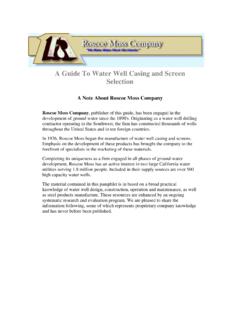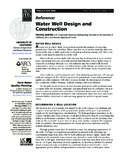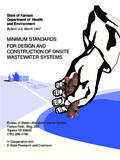Transcription of Why Add a Tank to a Tankless Water Heater?
1 Mom. She is well into her shower when a slug of cold Water hits. Yow! she cries. This energy-efficient Water heater isn t so great after all! There s an easy solution to this problem: Place a small (10-gal.) electric Water heater in line be-tween the Tankless Water heater and the point of use. The heavy lifting of heating the cold Water is done by the Tankless Water heater, giving you endless hot Water . Before the slug of cold Water from the Tankless heater reaches the showerhead, it mixes with the hot Water in the small tank, preventing the icy blast. By locating the small tank in a closet or under a vanity in a bathroom, you can enjoy the convenience of instant hot Water with the efficiency of the Tankless Water effectThe small-tank solution above can solve one problem with tank-less Water heaters, but it doesn t solve another: the fact that a Water heater s output is limited by its heating capacity, measured in Btus per hour.
2 The warmer the Water is as it enters the heater, the easier it is for the heater to keep up with demand. With incoming Water at 45 F, a 195,000-Btu-per-hour heater produces approximately 5 gal. per minute (gpm). Even with warmer Water coming in, the output is limited, though not as much. If two people want to use hot Water at the same time, this Mention Tankless Water heaters in a room full o f p l u m b e r s , and the language can get heated pretty quickly and that lan-guage isn t l s o k n o w n a s d e m a n d Water heaters, these compact units have long been used in Europe and in other parts of the world where energy costs are high. Here in the United States, we early adopters remember that in the 1980s, we installed units that roared like jet engines.
3 The slower the hot Water ran, the hot-ter it got, so adjusting the Water temperature in the shower was often a challenge. Many of us installed Tankless Water heaters only to go back later to replace them with tank-type units. Today s Tankless heaters have better control circuitry and per-form more efficiently than older models. My company installs a gas or propane Tankless Water heater in every house we build (electric models don t deliver the performance we need). We have many happy customers, but we ve learned that it s not enough simply to replace a tank-type Water heater with a Tankless Water surprise effect Picture this: The plumber has just finished hooking up a new high-efficiency gas-fired Why Add a Tank to a Tankless Water Heater?
4 Instant Water heaters save energy and offer endless hot Water , but not without some problems. A small tank and a big pump can fix the michael chandlertankless Water heater. Dad jumps in the tub and enjoys his shower, hot to the last drop. Five minutes later, Mom hops in. The Water in the pipes under the house is still warm because the pipes are insulated, but the heat exchanger inside the Water heater is dead cold. When Mom turns on the hot Water , the burners in the heater go to work making hot Water , but the cold Water is out of the gate and heading straight for No floor space required. Because the Water -heating system is so compact, it can fit comfortably in a I N E H O M E B U I L D I N G82 Photo this page: Daniel S.
5 Morrison. Drawings: Martha Garstang 2007 by The Taunton Press, Inc. Copying and distribution of this article is not Tankless : $300 to $1500 tank: $200 to $900installation Tankless Water heaters are much smaller and can fit almost anywhere. they re designed to be mounted on a wall. Gas-fired units require exhaust venting. tank heaters require a closet or basement-floor area. if you replace a tank with a Tankless heater, both the gas line and the venting usually need to be increased because the heating ele-ments are much larger in Tankless heaters than in tank-style Upkeep on tank-type heaters is simpler, and it s easier to find people who can work on them. Parts for Tankless heaters are more difficult to get.
6 Tank heaters are more tol-erant of hard Water . lime buildup in Tankless heaters cuts efficiency; adding flush ports allow the heater to be cleaned with white a Tankless heater generally outlasts an unmaintained tank type. other factors tank heaters are less likely to be damaged by freezing weather than Tankless heat-ers are. Tankless heaters pose less risk in an earthquake (less weight to restrain). for a detailed discussion of tank vs. Tankless Water heat-ers, see FHB #191 or visit versus Tankless Water heatersH e r e s H o w i t w o r k srather than storing hot Water in a tank and heating it all day, Tankless heaters heat Water as it runs through pipe. this approach is more efficient but can lead to the problems outlined eM #1 Because the pipes typically are insulated but the heat exchanger isn t, the Water inside the heater cools more quickly than the Water in the pipes beyond the heater.
7 This cold Water making its way through the pipes is an unpleasant surprise to an unsuspecting shower-taker. ProBL eM #2heaters can heat only so many gallons of Water per minute. if a dishwasher is turned on during a shower, the hot Water is split between the two uses, reducing hot- Water pressure to each. Heat exchangerBurnerFlow sensorIntake filterBoiler-drain flush portBall valvePressure-relief valveBoiler-drain flush portBall valveCold- Water surpriseUse a whole-house filter to keep silt out of the intake Water comes in from the Ec E M B Er 2 0 0 7 / jA N U ArY 2 0 0 883 COPYRIGHT 2007 by The Taunton Press, Inc. Copying and distribution of this article is not small tank-type Water heater stops the cold- Water surpriseadding a 10-gal.
8 Electric Water heater to a Tankless model creates a buffer to eliminate the section of cold Water left in the Tankless heater s heat exchanger. if located near the bathroom, the tank also can reduce the wait for hot Water . Upgrade: $ gpm will be diminished, dropping the pres-sure in the hot- Water line, but not the hypothetical scenario plays out like this: Mom is in the shower, recovering from the cold- Water surprise, when Dad turns on the dishwasher. Suddenly, the 5-gpm hot- Water capacity is split between Mom s shower and Dad s well -intentioned dish-washing. With the supply of hot Water cut in half, Mom s shower will either get noticeably colder or (if the shower has a pressure-balancing valve) diminish to a trickle as the cold- Water supply is automatically problem is solved by adding a pump and a tank to the Tankless Water heater.
9 I rewire the thermostat in a small electric Water heater to be used as a switch to control a pump that circulates Water from the tank, through the Tankless Water heater, and back to the tank. When the Water in the tank becomes cold, the thermostat turns on the pump and refills the tank with hot Water from the efficient gas Tankless Water hot Water is being pushed out of the tank by cold Water coming in from the well or the city without first having to go through the Tankless Water heater. This means that the hot- Water pressure at the tap no longer relies on the capacity of the Tankless Water heater. Hot and cold are now available at the same pressure and flow rate. No more pres-sure lags, no cold- Water surprise, and all the benefits of the energy-efficient endless hot Water of the Tankless system.
10 Fine-tune the system with a tempering valveI use a big pump (a Taco 009 or the equiva-lent; see Sources, facing page) because I want Water to flow through the Tankless Water heater quickly to reheat the small tank in as short a time as possible so that the pump will shut down and the gas flame will go out quickly. To achieve this brief burn time, I turn the Tankless Water heater s thermostat up to about 140 F while leaving the tank thermostat set at 125 F. When the Water in the tank drops below 125 F, the pump turns on and starts filling the tank with hot Water . The quicker the tank gets back up to temperature, the shorter the flame burns, and the more efficiently the Tankless Water heater converts the energy in the propane to hot Water .






